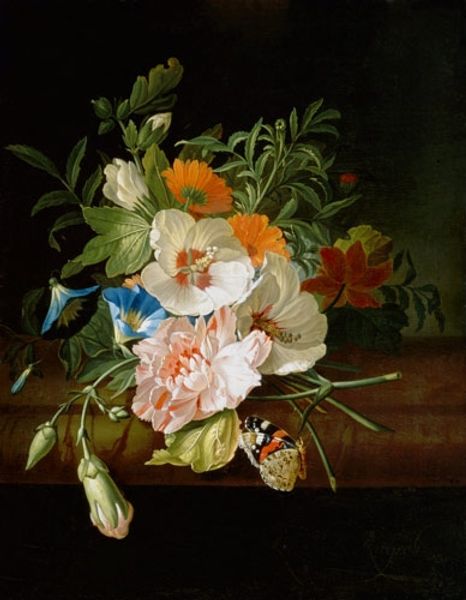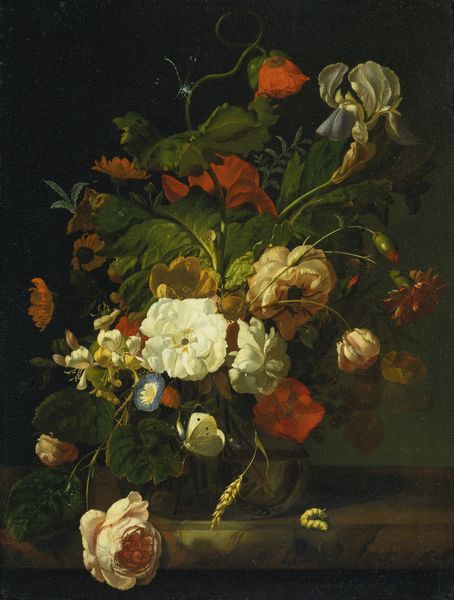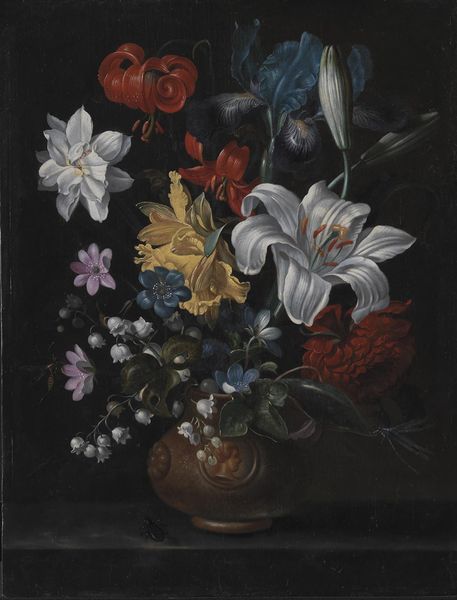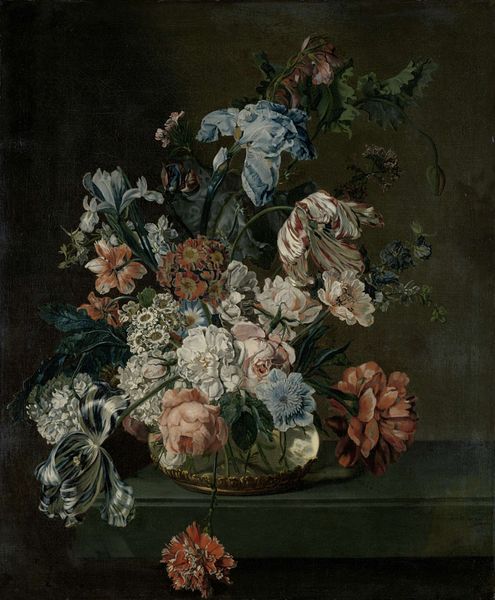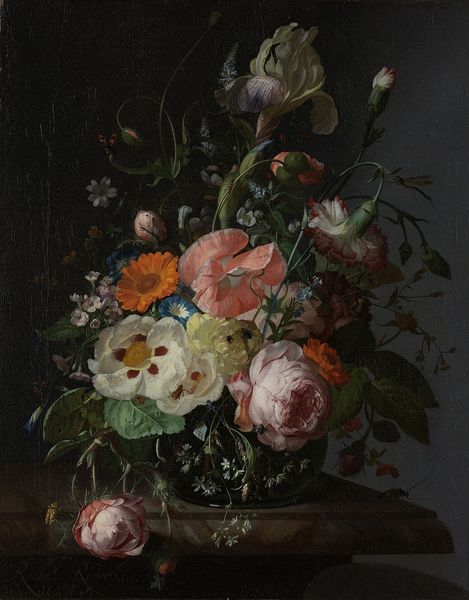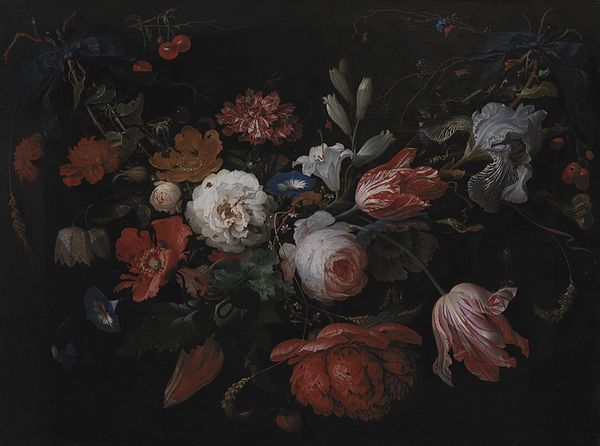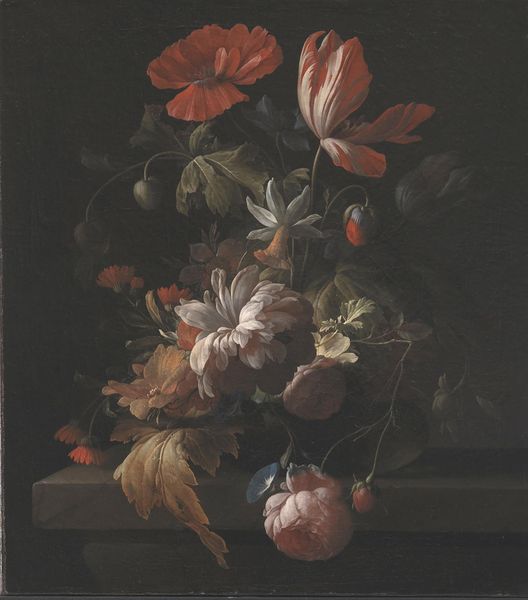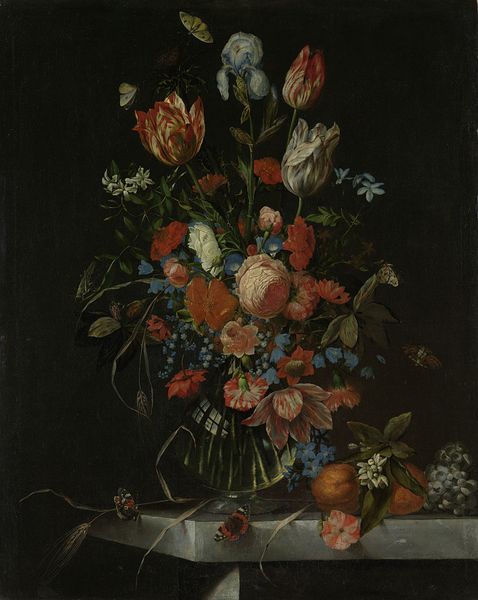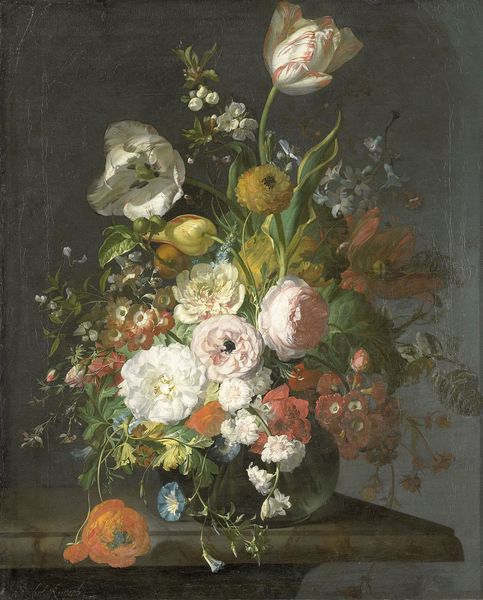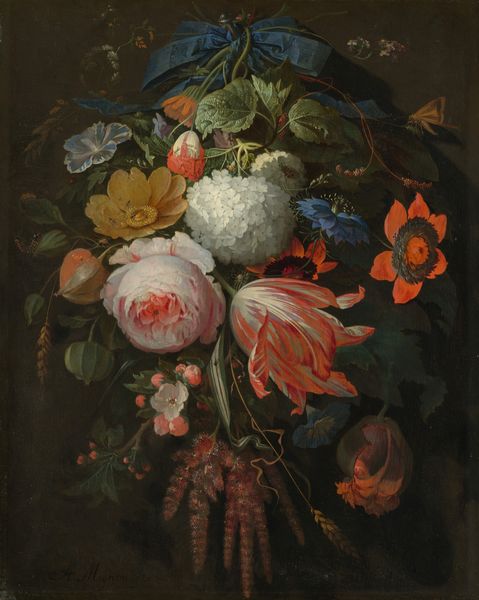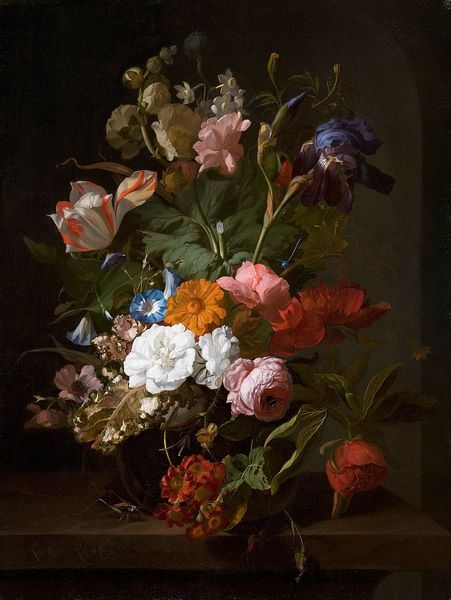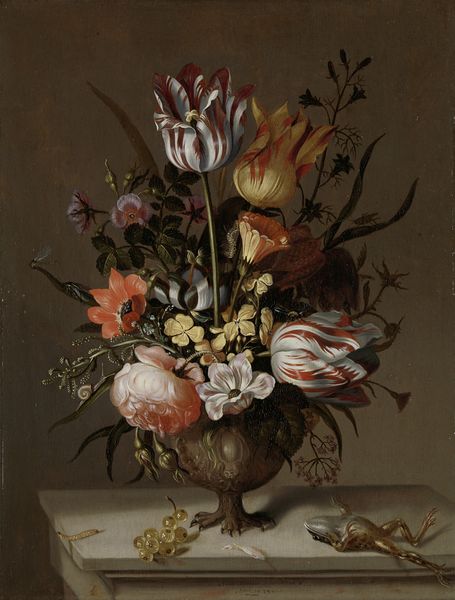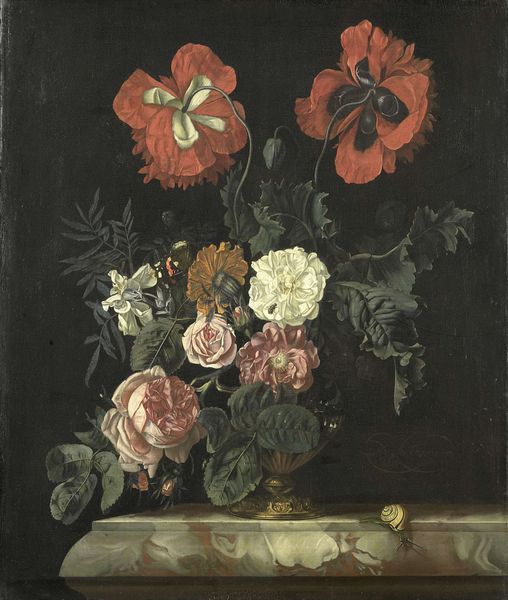
oil-paint
#
baroque
#
dutch-golden-age
#
oil-paint
#
flower
#
figuration
Copyright: Public domain
Curator: Standing here, we're looking at "Spray of Flowers with Insects and Butterflies on a Marble Slab." It’s an oil painting by Rachel Ruysch, created around 1690. Editor: The first thing that strikes me is the interplay of life and death. It feels both vibrant and somber, that juxtaposition, which, in my view, invites an analysis of ecological dynamics. Curator: Ruysch painted during the Dutch Golden Age. These flower paintings, although seemingly just beautiful still lifes, carried symbolic weight in Dutch society. The depiction of insects, the blooming and decaying flowers… these are classic Vanitas symbols reminding us of the transience of life. Editor: Yes, that fits right in. It also invites discourse surrounding wealth, class, and even the commodification of nature. Curator: Absolutely. The wealthy merchant class in the Netherlands was deeply invested in natural history and exploration, displaying exotic blooms and insects to highlight both wealth and global reach. These images normalized particular dynamics, reflecting power imbalances that existed at the time. Editor: How fascinating! Ruysch being a woman painter in this era, adds another layer of interpretation, given that women were often restricted in artistic representation. Did that reality impact her portrayal of gender or socio-political matters at that time? Curator: Undoubtedly, Ruysch carved her own space, defying societal expectations as a professional, and successful, female artist. I understand her perspective as being an exploration of both scientific and cultural understanding through her paintings. Her close observations offer insight into this societal structure. Editor: It makes me wonder about her intentions and the role her artwork played within cultural norms. Curator: It all intertwines to give a layered meaning to something seemingly straightforward: the pretty flower painting, the art object. I consider its place in history with much appreciation of our time and a wider awareness of current conversations in intersectional narratives. Editor: Thank you! Exploring these dimensions certainly adds much more nuance to this artwork.
Comments
No comments
Be the first to comment and join the conversation on the ultimate creative platform.
